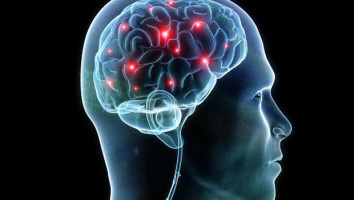
Glioblastoma multiforme is a devastating disease with no curative options due to several challenges.
The brain tumour has a significant overall mortality, in part due to its location, difficulty of surgical treatment and the inability to get drugs through the blood-brain barrier, a protective barrier designed to keep a stable environment within and surrounding the brain.
Results from a recent paper published online in the international journal Nanomedicine - Future Medicine found that a lipid nanocarrier engineered to be small enough to get past the blood-brain barrier could be targeted to deliver a chemotherapeutic drug more efficiently to tumour cells in the brain.
In vivo studies showed specific uptake and increased killing in glial cells, so much so that researchers initially questioned the results.
"I was very surprised by how efficiently and well it worked once we got the nanocarrier to those cells," Ann-Marie Broome, Ph.D., director of Molecular Imaging of the Medical University of South Carolina's Center for Biomedical Imaging and director of Small Animal Imaging of Hollings Cancer Center, said.
Initial results were so promising that she had her team keep repeating the experiments, using different cell lines, dosage amounts and treatment times.
She believes it potentially points the way to a new treatment option for patients with certain conditions, such as glioblastoma multiforme (GBM), the focus of this study.
In 40 percent of cases, standard treatments will extend life expectancy 4 to 7 months.
"It's really a dismal outcome. There are better ways to deliver standard of care." says Broome, highlighting the potential role of nanotechnology to fill gaps current therapeutics do not reach.
Nanotechnology is medicine, engineering, chemistry, and biology all bundled together and conducted at the nanoscale, between the range of 1 to 1,000 nanometers (for comparison, a thin newspaper page is about 100,000 nanometers thick).
"It's very important that the public recognise that nanotechnology is the future. It impacts so many different fields. It has a clear impact on cancer biology and potentially has an impact on cancers that are inaccessible, untreatable, undruggable - that in normal circumstances are ultimately a death knell." Broome added.
Broome and her team took what they know about the cancer's biology and of platelet-derived growth factor (PDGF), one of numerous growth factor proteins that regulates cell growth and division and is also overexpressed on tumour cells in the brain, and, with that in mind, engineered a micelle that is a phospholipid nanocarrier to deliver a concentrated dose of the chemotherapy drug temozolomide (TMZ) to the GBM tumour cells.
"Micelles of a certain size will cross the blood-brain barrier carrying a concentrated amount of TMZ," she explained about how the nanotechnology works. "The PDGF is used much like a postal address. The micelle gets it to the street, and the PDGF gets it to the house."
This targeting ability is important because researchers have learned that it's likely that the GBM will recur, she said.
"It's thought that satellite cells left behind after surgical removal are the fastest growing and most dangerous ones. We're trying to kill those rapidly growing satellite cells that will grow into new tumours in that location or others. These satellite tumours grow more aggressively than others. You have to hit them hard, fast and aggressively."
Surprisingly, nanotechnology is already a part of everyday life in many ways that people don't realise.
It's used in everything from makeup as moisturisers or UV sunscreens to ice cream to maintain frozen temperatures and creamy textures.
In medicine, Broome said, researchers construct nanocarriers that are stable and stealthy. "Your immune cells can't attack them. They remain hidden."
When the package gets to where it's going, nanotechnologists have various methods to get the micelles to release their payloads- one way is to use the acidic nature of a rapidly growing tumour.
"While the tumour is growing, it creates waste by-products and metabolites that alter the pH, thus lowering it. As the center becomes more necrotic, it becomes even more acidic."
The change in pH triggers a release of the drug from our micelles just where clinicians want it to go to reduce toxicity to the rest of the body, she said.
"We take advantage of the tumour's natural environment as well as the cellular expression. I'm a big proponent of understanding that microenvironment has an impact on how well you can treat tumours. It's probably why so many therapeutics fail - because you have to take into account the immune system, the local environment, and the cells themselves - all three of these are important considerations."
"This paper is exciting because it demonstrates a novel approach to treating brain tumours, combining nanotechnology targeting to a marker of brain tumours with a specialised delivery system. It will allow us eventually to target aggressive childhood and adult brain tumours." Amy Lee Bredlau, M.D., director of MUSC Health's Paediatric Brain Tumour Program, says.
"When we perfect this strategy, we will be able to deliver potent chemotherapies only to the area that needs them. This will dramatically improve our cure rates while cutting out a huge portion of our side effects from chemotherapy. Imagine a world where a cancer diagnosis not only was not life-threatening, but also did not mean that you would be tired, nauseated or lose your hair." added Bredlau, but also cautioned against the current limitations of nanoscale therapies.
"It may or may not be effective for all types of GBMs. There are subtypes as well as therapeutic-resistant GBMs that these nanocarriers may not impact. We need to continue rigorous testing to verify and validate our initial findings. Now that we know we can get the drug to its designated location and get it to work efficiently, we have a comparator. We can test more lethal and different combinations of drugs that have never before been used in this scenario."
Source: Nanomedicine - Future Medicine